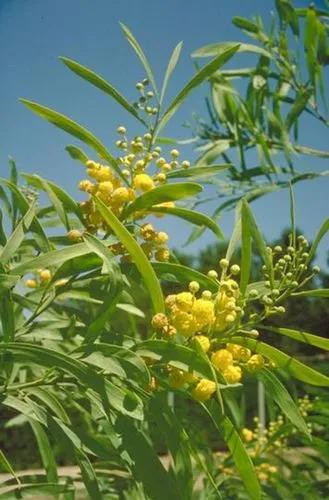Berberis aquifolium is an evergreen shrub in the family Berberidaceae that is native to rocky woods and coniferous forests in the Pacific Northwest from British Columbia to northern California.
Mountain-grape Care
Berberis aquifolium



This plant is known by a large variety of different common names including Oregon hollygrape, Oregon grapeholly or Oregon grape. This is a suckering, evergreen shrub with a spreading to upright habit that typically grows 3-6’ tall and to 5’ wide, although it can be trained to grow taller. It is noted for its yellow flowers in spring, edible blue-black berries in late summer, pinnately compound evergreen foliage and ability to grow well in shade. Each compound leaf (to 10” long) typically has 5-9 spiny, ovate to oblong-ovate leaflets (each to 3” long). New leaves emerge red-tinted in spring, maturing to glossy dark green by summer. Foliage acquires purplish hues in fall and burgundy-bronze tones by winter, sometimes suffering from winter burn. Bright yellow flowers (to 2.5” long) bloom in terminal inflorescences (racemes) in April. The specific epithet aquifolium denotes "sharp-leafed" (as in Ilex aquifolium, the common holly), referring to the spiny foliage.
How to Care for the Plant

Water

Water plants deeply in their first year, not allowing the soil to dry out, to help form an extensive root system. After that, the plants are drought tolerant. They need regular supplemental water during the warmer months of the year.

Fertilizer

Fertilize in March, using a slow-release, balanced fertilizer. Balanced fertilizers have equal amounts of nitrogen, phosphate and potash. Use a rate of 1 pound of fertilizer per 100 square feet of ground.

Sunlight

Partial shade is ideal for this species. It can also be grown in full shade or full sun, though too much light can cause foliage scorching. Try to find a planting location that offers some shelter from the wind.

Soil

The soil needs to be moist with good drainage for optimal growth. It needs to be acidic or at least neutral as alkaline soils can be problematic. Change your soil to be more acidic if the pH is not too much above neutral. A layer of organic mulch around the plants will help the soil retain moisture and reduce competition from weeds.

Temperature

This shrub can be grown in the areas with the lowest winter temperatures of -20°F to -30°F.

Popularity

1,079 people already have this plant 287 people have added this plant to their wishlists
Discover more plants with the list below
Popular articles






